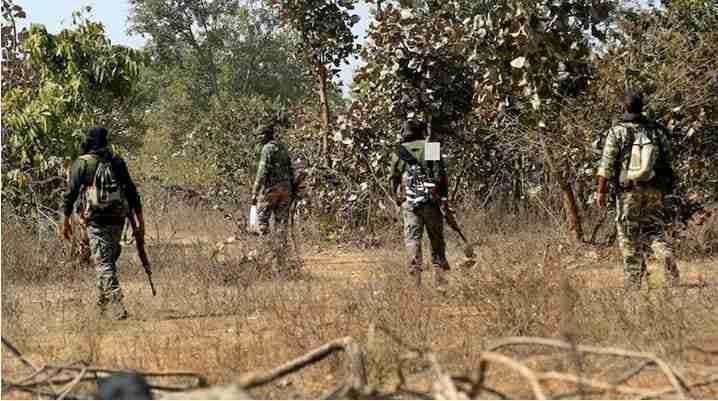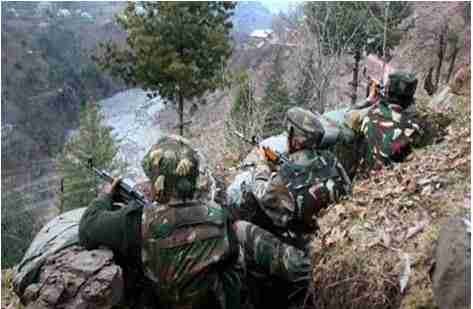Clausewitz treatise ‘On War’ is indeed seminal, as the essence of nature of war enunciated two centuries ago, remains unchanged and the character of war as stated by him, is still influenced by the ‘spirit of the age’. Today, the world is witnessing long-term transition in the balance of global economic and military power, increased competition between States, and the emergence of more powerful non-state actors.
Undoubtedly the world is changing rapidly and fundamentally, with an increase in occurrence of unexpected developments. The geo strategic landscape in India’s immediate and extended neighbourhood is turbulent and in a state of flux—A consequence of China’s vigorous push for a global position of preeminence, its intransigence and bellicosity in the Indo-Pacific region and the strife with India’s aspiration for regional leadership.
The security environment is further vitiated due to the strategic competition of dominance in the region between China and the US. These changes will influence the shape and type of future conflicts.
Concurrently, the unprecedented scale and speed of ‘socio-politico – economic’ changes have resulted in a tectonic shift in the spectrum of conflict. Threats have increased in scale, diversity and complexity. In addition to legacy threats due to territorial and ideological differences, disruptive technologies, militarisation of cyber and space, emergence of ‘non state’ actors, pandemics, rising social inequity, scarcity of critical resources and impact of climate change, has crowded the threat landscape.
The safety and security of the nation and its citizens can now be marginalised without crossing national borders, with anonymity and apparent deniability, while political objectives, can be achieved by means, other than military.
To provide clarity for tailoring appropriate stratagems and corresponding capacity development, it is proposed to categorise and understand the nuances of the future threat landscape, in the subsequent paragraphs. They can be classified under seven main categories.
Traditional war threats
These are threats from traditional adversaries due to legacy issues, like border disputes etc. Incase of India, it is the territorial disputes with Pakistan and China. Also, there is increased probability of threats from nation states, with intensifying inter and intra-state competition and erosion of the rules based international order.
In these conditions an ‘all out’ or limited, conventional military conflict of manoeuvre and attrition, with or without other means of coercion, will continues to be a reality, for achievement of political objectives. The character of conventional conflict will be made harder by the growing use of asymmetric and hybrid tactics by states, combining economic coercion, disinformation, proxies, terrorism and criminal activity and blurring the boundaries between civil disorder and military conflict.
Irregular threats
There are increased incidents of threat posed by state-supported ‘proxy war,’ non-state actors and exploitation of disruptive technologies, to incite disruption cum violence by supporting terrorism, extremism, separatism or insurgency in target countries, for political gains.

This has led to a growing lexicon of military terminology to define this new forms of conflict, ie, sub conventional, unrestricted war, grey zone operations, hybrid warfare or Gerasimov doctrine and non-contact operations. These will require the Armed Forces to be innovative, with different capacities to tackle these threats.
Disruptive threats
Recent technological breakthroughs in the field of warfare, have resulted in induction of revolutionary unmanned weapon platforms, robotics, enhanced ISR and quantum performance upgrades to military munitions, from directed energy weapons to hypersonic missiles. AI, machine learning, augmented/virtual reality, big data, neural networks, nano technology and new materials are at the threshold of triggering the next phase of revolutionary military upgrades. This has not only spatially enlarged the conflict zone, but increased the devastation and violence of conflict.

Disruptive technologies has led to the erstwhile ‘global commons’ of cyber and space, becoming contested zones. This has not only opened new frontiers for conflict, but has enlarged the battlespace from the military to non-military domains. Information Warfare which is a subset of this type of warfare exploits cyber, print & visual media and social networking platforms, to negatively influence adversarial perceptions and cognitive decision making.
This has emerged as an area of high vulnerability and high probability, requiring urgent capacity building by the armed forces. Events in Estonia, Georgia, Ukraine, conflict between Armenia & Azerbaijan and ‘swarm drones’ attack on Saudi Arabia’s refineries, are reflective of the changing character of war fighting.
Turbulence in neighbouring countries
Neighbouring countries in Asia and Africa are at different stages of economic development matrix and experiencing their own unique blend of socio-political challenges, with internecine ethnic strife and fissiparous tendencies.
In South Asia, instability in the near or immediate abroad, can force migration/refugees, as being witnessed due to instability in Myanmar, fuel terrorism in India due to the state of flux in Pakistan and Afghanistan, create friction amongst neighbouring countries, due to third party interference. In the case of South Asia, India, the largest and economically resilient nation, will have to be responsive to events in these neighbouring countries that have negative ramifications on its security.
Catastrophic threats
The current pandemic and events like the 2004 tsunami in the Indian Ocean, are catastrophic threats. Also, acquisition and possible threat of use of weapons of mass destruction or widespread contamination by chemical/biological agents, by terrorists or inimical elements, with or without collusive support of rogue states, are again low probability but high risk threats.
Resource scarcity
A burgeoning world population, irresponsible use of existing resources and insensitive infrastructure development, is creating stress and competition for critical resources like water, food, energy and public health. It is estimated that by 2030, the world could face demands for 50% more food and energy and 30% more water, while their availability is becoming threatened. The Middle East and North Africa region are particularly at risk, given existing high levels of water stress and high rates of population growth. In the sub-continent also the water sharing between the riparian states is a potential source of discord.
Environmental Imbalance Global warming and climate change will trigger environment related emergencies and increase frequency of natural disasters. It is likely to disrupt populations, agriculture and supply chains, with increased likelihood of political instability, conflict and migration. Rising sea levels will threaten coastal settlements and small islands, another cause for migration and conflict amongst neighbouring countries.
Conclusion
The rise of ambiguous, protracted and indecisive conflict in a complex environment, there is a need to relook at current doctrines and strategies, conceptualise new stratagems, so that the Armed Forces are prepared for any future eventuality.In his book Future Shock, Alvin Toffler posits that change is inevitable but the disconnect happenswhen the adaptive process for individuals and institutions is disoriented.
This is also when the direction and pace of change is not appreciated in time or controlled. So lest the military leadership be at fault for complacency, there is a need to initiate suitable modulations, on priority. For India, security imperatives are indeed complex to say the least, as it has to not only to empower itself for emerging threats, but address unresolved border disputes with its two neighbours, with growing asymmetry in capabilities amongst the three countries.
The Indian Armed Forces will have to be prepared for internal, external and expeditionary capabilities, including HADR missions. It will need to tailor its capabilities and organisational structures for an enhanced role in the IOR, space, cyber and information domain, incorporate capability of deep strikes, exploit satellites for communication and ISR, induct hypersonic munitions and unmanned vectors.
We would have to enhance future capability to maintain military superiority for a full spectrum war on land, air, sea, space, cyber and psychological domains.


